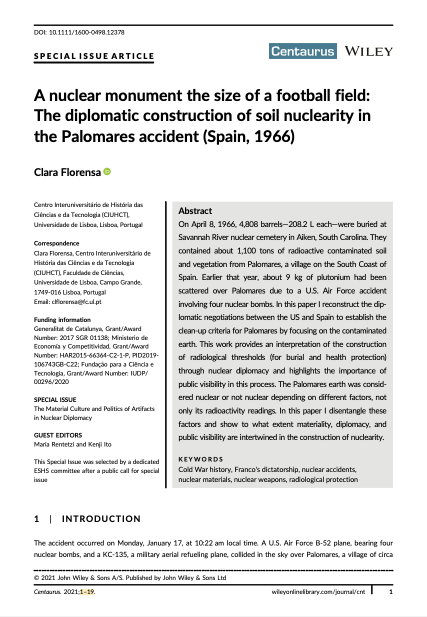A nuclear monument the size of a football field: The diplomatic construction of soil nuclearity in the Palomares accident (Spain, 1966)
- Autoria
- Edição
- Volume 63, Issue 2
- Ano
- 2021
- Periódico
- Nº de Páginas
- 320-338

Resumo (em inglês)
On April 8, 1966, 4,808 barrels—208.2 L each—were buried at Savannah River nuclear cemetery in Aiken, South Carolina. They contained about 1,100 tons of radioactive contaminated soil and vegetation from Palomares, a village on the South Coast of Spain. Earlier that year, about 9 kg of plutonium had been scattered over Palomares due to a U.S. Air Force accident involving four nuclear bombs. In this paper I reconstruct the diplomatic negotiations between the US and Spain to establish the clean-up criteria for Palomares by focusing on the contaminated earth. This work provides an interpretation of the construction of radiological thresholds (for burial and health protection) through nuclear diplomacy and highlights the importance of public visibility in this process. The Palomares earth was considered nuclear or not nuclear depending on different factors, not only its radioactivity readings. In this paper I disentangle these factors and show to what extent materiality, diplomacy, and public visibility are intertwined in the construction of nuclearity.